Wearable Robots May Help the Paralyzed
by: design milk, 2010-12-14 22:29:08 UTC
researchers used robots to add this missing sensory input, and they’ve found it allows monkeys move a cursor across a screen more quickly and accurately.


 Braille Block teaches digital language to visually impaired in a playful manner
Braille Block teaches digital language to visually impaired in a playful manner
by: The Design blog, 2010-12-15 12:21:21 UTC

Braille may help the visually impaired read and write with ease, but learning the digital language fluently can get difficult for beginners, as it needs a lot of time and incessant practice. To make the sign language easy for beginners, Taiwanese designer Fanson Meng has developed a palmtop gadget dubbed the “Braille Block” that works like a handheld game to motivate the learner. Based on the six dots of Braille, the buttons of the device are easy to use that encourages the learning skills in a playful manner. Featuring a wide range of tools and entertainment, such as a word game, dictionary, music and text recording, the Braille Block makes the whole learning process easier for the learner.



Via: Red-dot


 DJ Lights: 85 Colorful LED Globes Controlled by Body Movement
DJ Lights: 85 Colorful LED Globes Controlled by Body Movement
by: Inhabitat , 2010-12-16 15:22:49 UTC

If we didn’t have to worry about spewing carbon into the atmosphere we would probably be on a plane to Lima, Peru to see this intriguing LED installation called DJ Lights in person. The interactive art exhibit was created by Cinimod Studio for energy company Endesa’s holiday celebration and allows you to be the DJ that controls 85 inflatable LED-lit globes and their accompanying soundtrack with just your body movements! Check out the video of the lights in action after the jump.




Read the rest of DJ Lights: 85 Colorful LED Globes Controlled by Body Movementhttp://www.inhabitat.com/wp-admin/ohttp://www.inhabitat.com/wp-admin/options-general.php?page=better_feedptions-general.php?page=better_feed
Permalink |
Add to
del.icio.us |
digg
Post tags: art installation, cinimod studio, dj lights, dj lights exhibit, endesa, energy efficient art installation, energy efficient lighting installation, green light installation, interactive art, LED light art, LED light installation, LED lights, lima peru art installation, sustainable art
California’s First Molten Salt Solar Energy Project Gets Green Light
by: Inhabitat , 2010-12-16 16:25:22 UTC

California has just approved a new solar project that could revolutionize how we use energy from the sun – namely because it will be able to keep producing electricity even after night falls. SolarReserve‘s Rice Solar Energy Project will end up looking a lot like the solar thermal tower above but will have a secret weapon hidden underneath – molten salt. Since the salt will be able to reach temperatures over 1000 degrees Fahrenheit and retain most of the heat it collects during the day, the plant will have the ability to keep churning out juice long after the sun goes down. It will be the first project in California to use the savory technology to store and distribute energy.




Read the rest of California’s First Molten Salt Solar Energy Project Gets Green Lighthttp://www.inhabitat.com/wp-admin/ohttp://www.inhabitat.com/wp-admin/options-general.php?page=better_feedptions-general.php?page=better_feed
Permalink |
Add to
del.icio.us |
digg
Post tags: california solar energy project, california solar plant, california solar power, california thermal solar plant, molten salt solar plant, molten salt thermal solar plant, new solar energy project, rice energy project, rice solar energy project, rice solar power plant, solarreserve
My Bike Keeps Me Juiced Up
by: Yanko Design, 2010-12-15 09:18:33 UTC
I think the I-Green concept is brills. Designer Fandi Meng already has an iF and Good Design award for previous work so I’d expect nothing less. The I-Green is a small bike peripheral that turns kinetic energy into electrical to charge nearly any portable device. I like to ride my bike with my phone to track my progress but the GPS sensor kills the battery. This seems like an awesome idea to keep my phone juiced up. I’ll take one but please but, maybe in another color?
Designer: Fandi Meng





----------
Yanko Design
Timeless Designs - Explore wonderful concepts from around the world!
Yanko Design Store - We are about more than just concepts. See what's hot at the YD Store!
ILEK unveils self-sustaining house that can also charge your EV
by: Ecofriend, 2010-12-14 11:08:52 UTC

Eco Factor: Self-sustaining house generates renewable energy.
The Institute for Lightweight Structures and Conceptual Design at the University of Stuttgart has unveiled a new concept home that not only generates power for itself, but can also help the homeowner charge his or her EV with homemade electricity.
Christened the Plus-Energy House with Electromobility, the zero-energy house includes several integrated green technologies such as a rooftop array of photovoltaic panels and solar thermal generators. The concept home also features an open face that showcases its systems with an interactive display.

The designers claim that the concept house has super efficient systems that control and divert the energy to electric vehicles in the garage or send excess electricity to the grid.
Via: Inhabitat/Treehugger


 World’s first hybrid street sweeper helps keep roads and air clean
World’s first hybrid street sweeper helps keep roads and air clean
by: Ecofriend, 2010-12-15 11:24:53 UTC

Eco Factor: Fuel-efficient hybrid sweeper uses electric motors to reduce engine load.
With a fuel-efficient 6.7-liter Cummins diesel engine, the Allianz 4000 is a new hybrid sweeper that is being touted to be the first in the world. The Allianz 4000 has a top speed of about 60mph and uses two 12-volt lithium-ion batteries and an electric-traction drive system. The company is confident that the hybrid setup allows the Allianz 4000 to reduce fuel consumption by as much as 45 percent over a diesel-only counterpart.
As a sweeper needs to propel itself and spin a broom at the same time, the differential is set up to turn the broom at a constant speed, regardless of the speed of the sweeper. Since the sweeping functions are handled by electric motors in the Allianz, the sweeper is able to operate a smaller single diesel engine running at reduced RPMs. Moreover, the reduced fuel consumption reduces emissions for clearer air.
Via: Wired/Slashgear


 First Hybrid Street Sweeper Cleans Up NYC
First Hybrid Street Sweeper Cleans Up NYC
by: Eco Geek Latest, 2010-12-15 18:15:34 UTC

The world's first hybrid street sweeper has begun cleaning the streets of New York City. The Allianz 4000 is a diesel hybrid that reduces diesel fuel use by 40 - 45 percent compared to traditional street sweepers.
The Allianz 4000 also features two 12v lithium-ion batteries and an electric traction drive system which, in addition to the diesel engine, both propel the truck and spin the broom at a constant speed. The sweeper has a top speed of 60 mph so it can travel on highways, but whie on duty it usually runs at about 3 - 7 mph.
The benefits to the hybrid street sweeper are both the huge fuel savings and the lower emissions that easily fit under any city-wide laws requiring cuts in fleet emissions.
Allianz has yet to determine a per-unit cost for the new sweeper.
via Wired Autopia
Images via Allianz
Smartphones Turn Into Universal Remotes for Home Appliances
by: Tech-On! : tech news - straight from Asia., 2010-12-15 01:06:00 UTC
Techfirm Inc, a Japan-based firm developing software for mobile phones, etc, started to develop a system that enables to use smartphones as universal remotes for multiple home electric appliances such as TVs and air conditioners.
Leveraging Manufacturing for a Sustainable World
by: Environmental Leader, 2010-12-14 07:01:18 UTC

 I recently attended a conference on high performance manufacturing in Gifu, Japan, focusing on a variety of technical advances to push manufacturing ahead in the face of increasing competition, rising costs, difficult-to-process materials and changing requirements due to advanced product designs. A sub-theme of the conference was energy efficient manufacturing.
I recently attended a conference on high performance manufacturing in Gifu, Japan, focusing on a variety of technical advances to push manufacturing ahead in the face of increasing competition, rising costs, difficult-to-process materials and changing requirements due to advanced product designs. A sub-theme of the conference was energy efficient manufacturing.
One of the keynote speakers was a senior managing director of Toyota in Japan. In his presentation, in which he concentrated on the production of hybrid vehicles, he covered a number of manufacturing challenges Toyota was tackling with respect to getting more performance out of the automobile components. His examples ranged from magnetic elements for motors (which they stamp and assemble from materials with decreasing concentrations of rare earth metals!), to braking/energy recovery systems, to battery storage elements, to other power train components a heat recirculation system that shortens engine warmup time – all boosting fuel efficiency.
This work at Toyota tracks the performance improvement discussed in my last article but, this time, for electric motors and systems and not internal combustion engines. The result is systems that hold a larger charge for a longer period of time increasing the range of the vehicle without engine assistance and, thus, dramatically improving vehicle performance.
A major portion of the improvement cited by Toyota for reducing CO2 emissions are due to merging (consolidating) production lines and discontinuing processes. This means looking for ways to remove, or eliminate, process steps in manufacturing by developing new technology with better capability to convert materials (recall that manufacturing is basically “shape transformation”) with fewer process operations. Or, eliminate them altogether.
This resulted in a total annual CO2 emissions of the company to 1.22 million tons – a reduction of almost 10% since the previous year (see their 2010 corporate sustainability report, page 29, for details). The per-vehicle CO2 emission from production was down a bit also – but this could have been greater reduction except for the downturn in sales. Leveraging manufacturing!
Other companies, in the regular paper sessions, reported on their efforts to improve performance of their products and cited the impacts of their products in use. A paper by Mori Seiki engineers started out listing an estimate of the power consumption/green house gas emissions of their installed base of machines worldwide as an indication of the potential for improvement in machine operation and process improvement. This will serve as a basis to track the impact of their new machines introduced to the market which will, presumably, offer substantially reduced energy consumption (and hence green house gas emission). The goal is 40% reduction!
My immediate reaction was that this is a bold move to “own up” to the performance of your product (even in the customer’s hands) to establish a base line of performance. I was reminded of Toyota who list the cumulative savings of CO2 the 2.5 million hybrid vehicles they’ve sold compared to equivalent gasoline powered vehicles (Toyota CSR, 2010, page 24). This provides a baseline for measuring improvement. The figure below, from the Toyota CSR, shows this impressive reduction.
What if we could show this for all products as they evolve to more energy (or resource) efficient performance? You might think that for automobiles or machine tools this is an easy measure – impact per unit of product (which translates into reduced impact per unit of GDP from our discussion last time about the impact equation).
But not all improved performance can be easily equated to reduced impact per unit of GDP. There are many things that are sold in the world – but not all of them contribute productively to our life, or work, or well being.
It made me to wonder whether of not we could extend this kind of impact per unit to other products. What might the rules be for this (meaning what kinds of products would fit the analysis)?
It seems like it would have to be something that performs a function as a product, where function is a useful benefit, like transportation, or washing clothes or dishes or a tool used in production. Or, it must relate to quality of life (but not necessarily video games which use less energy or an iPod with a longer battery life for a charge).
What about food? One can’t really deliver “more protein/unit” unless we eat fish paste (although, spending time in Japan one realizes just how many different forms of nourishment you can eat!).
I’m not finished thinking about this but if you have some ideas on extending the concept of reduced impact/product unit to a wider range of products let me know.
At the end of the conference we visited the Mazak Machine Tool Company’s manufacturing facility. They practice something they call “done in one” which refers to using one machine in place of several individual process steps – basically multi-tasking on steroids. I discussed the potential of such approaches in a posting on “green balancing” last December. And this fits with Toyota’s consolidating production steps/eliminating processes. Mazak gave an example of applying this to a crankshaft prototype production operation which went from 13 machines to 1, and a reduction of 2800 hours of processing to 8! Done in one. There is some info about this on their website.
So, if Mori Seiki (or Mazak) reduce the machine’s consumption by 40% while reducing the product manufacturing phase impact as well by process consolidation or elimination, and then the product goes on to have a substantially improved fuel consumption (in the case of an automobile) with dramatically reduced CO2 emissions – that’s leveraging manufacturing. And that’s a technology wedge that takes a big bite out of the gap between business as usual and a sustainable level of performance.
And, if you’d like another neat example of eliminating process steps for dramatic improvement, “google” grind hardening or see an example on the Mori Seiki website. It avoids a heat treatment step which, usually, accounts for a substantial portion of energy consumption in production of precision hardened components – like shafts.
For the talk I gave at this Japanese conference I prepared a graphic to summarize the concept of leveraging manufacturing, see below.
It is a bit of a busy image but this shows the amplifying effect of manufacturing improvements (including the reduction in manufacturing phase impact or consumption) on the eventual benefit in product use. And, from my observation and evidence from other companies (like the Toyota and Mori Seiki examples) the characterization of small seeds of process improvement yielding large rewards over use is right on target.
David Dornfeld is the Will C. Hall Family Chair in Engineering in Mechanical Engineering at University of California Berkeley. He leads the Laboratory for Manufacturing and Sustainability (LMAS), and he writes the Green Manufacturing blog.


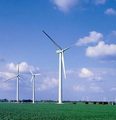

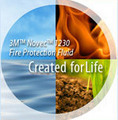
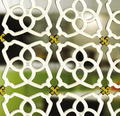



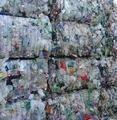
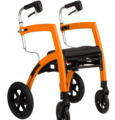
Comments by our Users
Be the first to write a comment for this item.